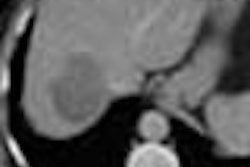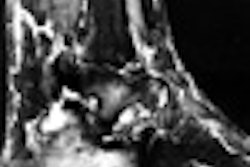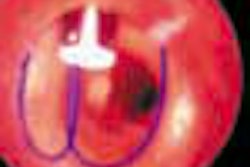SAN ANTONIO - Interventional radiologists should take advantage of cardiac MRI before the opportunity to take part in a treatment revolution passes them by, according to a session at the 26th annual scientific meeting of the Society of Cardiovascular and Interventional Radiology.
"The bottom-line, take-home message is that all radiology departments and practices must be prepared to offer cardiac MR services now," said Dr. Vivian Lee, an associate professor of radiology at the New York University Medical Center.
She predicted that MRI's role would be substantial, noting that five of the top 10 imaging studies in the United States involve cardiac visualization. And one of the main tools used to perform these studies will be cardiac MR, she said.
"Cardiac MR is an incredibly powerful tool and it is imperative that you get involved in its use now -- before it is too late," said Lee, a plenary speaker at the SCVIR session.
Another speaker, Dr. David Levin of the Thomas Jefferson University Hospital in Philadelphia, polled the audience and found that about one in four interventional radiologists thought that they should be involved in performing cardiac imaging. It once was all done by radiologists, Levin said, but over time cardiac imaging was usurped almost completely by cardiologists. He suggested that attempts to get back into the business by radiologists could precipitate "the mother of all turf battles."
If the interventionalist is going to step into the cardiac imaging field, Lee said the strategies for a successful endeavor include:
- Working with a dedicated team that would include a technician, nurses, a radiologist, "and, even possibly a cardiologist."
- Use a state-of-the-art magnet and up-to-date software. She said that most vendors of the MR devices have software packages that allow measurement of cardiac flow. Some of the newer machines can produce usable diagnostic information in one breath-hold, including clear diagnostic motion studies.
- Become familiar with the pathology and anatomy of the heart, especially how the coronary arteries might differ from patient to patient. For example, Levin noted that 85% of people have right-heart dominant anatomy in which the underside of the left ventricle is nourished by the blood vessel that comes off the right descending artery. Seven percent of patients have a left-heart dominant artery system, and the rest have anatomy that is balanced, with both left and right arteries feeding the base of the heart.
- Establish treatment protocols.
Whether radiologists should re-enter the cardiac imaging field or not, Levin said they will still have to become knowledgeable about cardiac imaging.
"It is quite likely that within the next 5-10 years, much of diagnostic coronary angiography will be replaced by noninvasive MR coronary angiography or CT coronary angiography. If radiologists are to participate, they must obviously have knowledge of all aspects of coronary disease."
By Edward Susman
AuntMinnie.com contributing writer
March 6, 2001
Click here to post your comments about this story. Please include the headline of the article in your message.
Copyright © 2001 AuntMinnie.com



















